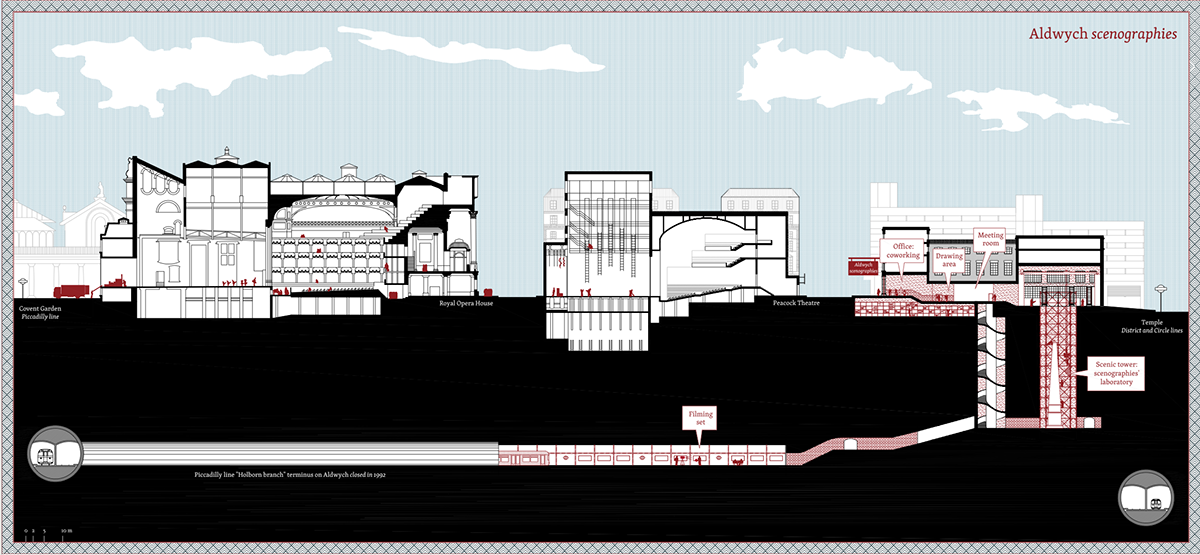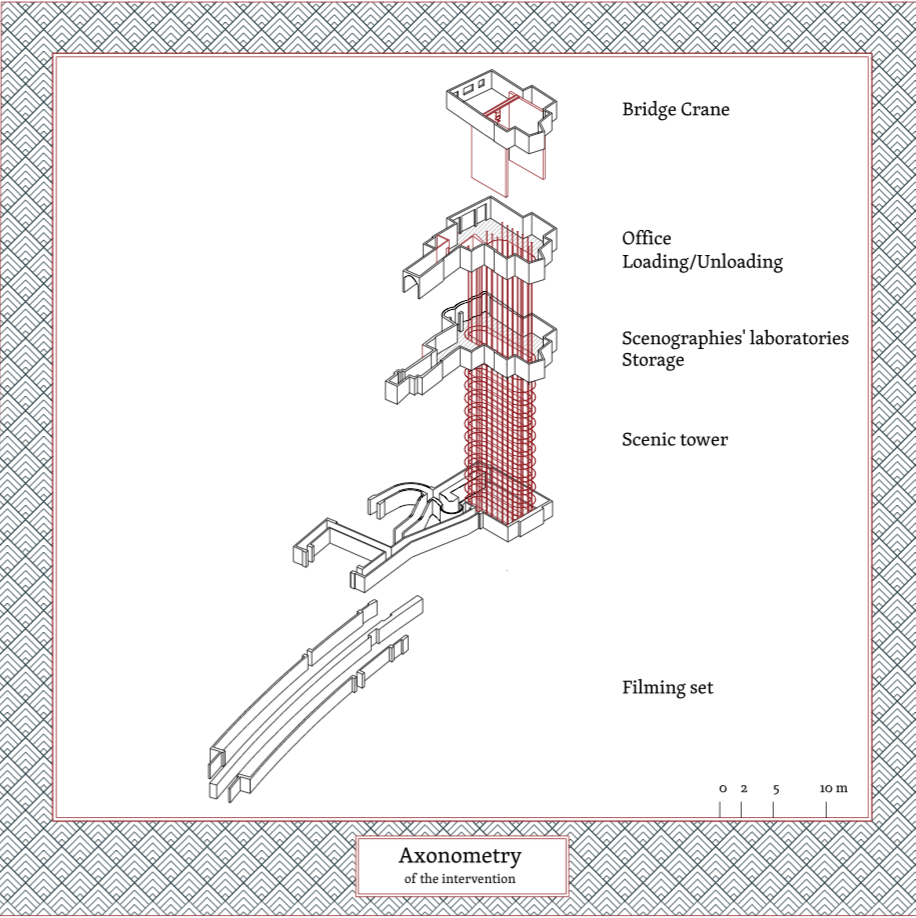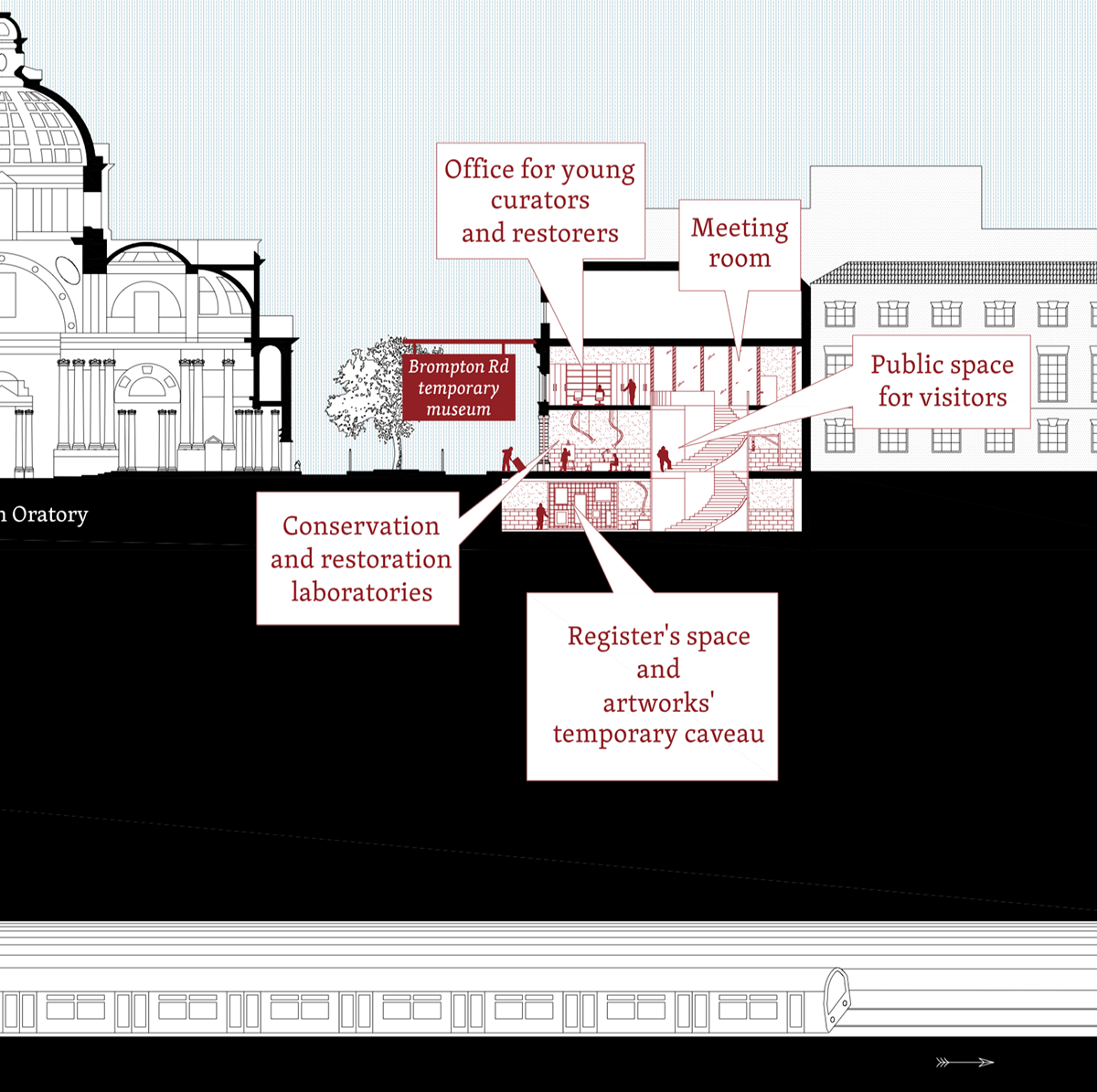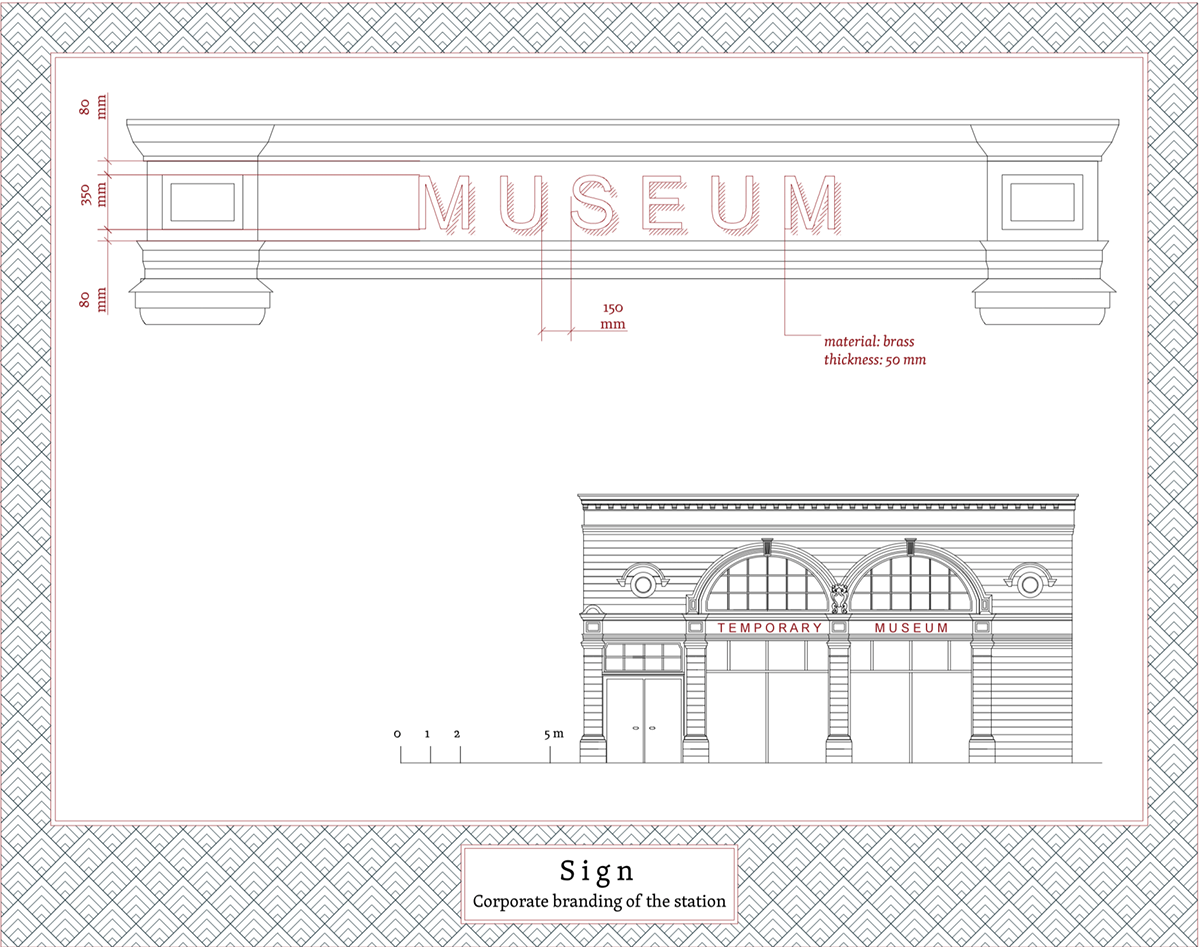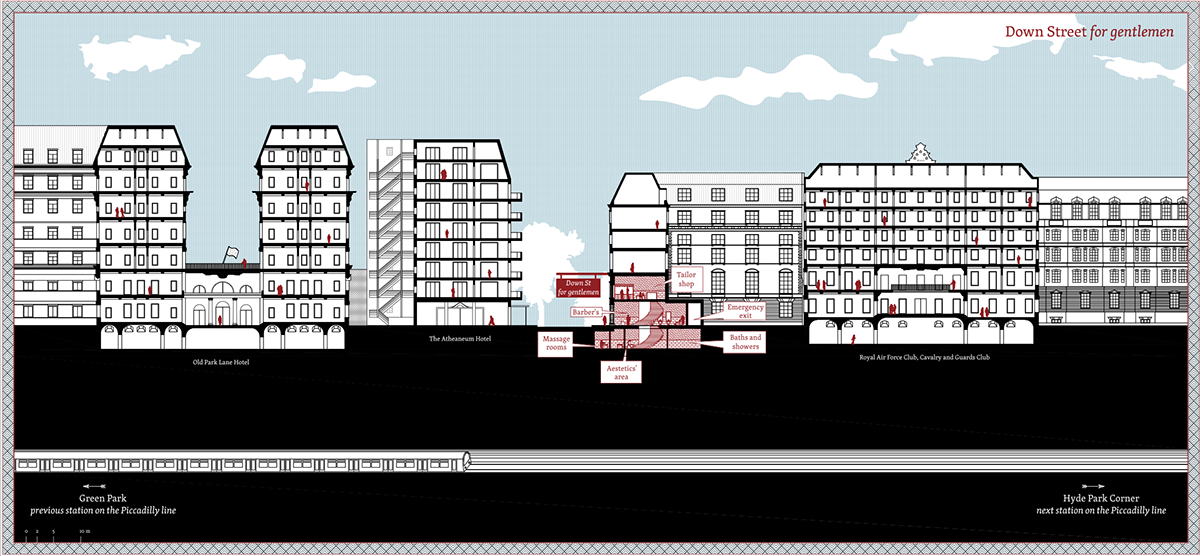The future of Leslie Green
Three case studies for a stategic reuse of London’s abandoned Tube stations:
“Aldwych scenographies”, “Brompton Road temporary museum”, “Down Street for gentlemen”
MArch thesis
Politecnico di Milano
School of Architecture and Society
Master in Architecture
supervisor: prof. Matilde Cassani
co-supervisor: prof. Caterina Tiazzoldi
London possesses the most important Underground of the World. It was the first and still remains the largest today. During its 150 years long history it has truly become part of Londoners, their lifestyle, it has entered their history, culture and tradition. Amazing architectures were designed for the Tube creating landmarks through the city as beautiful maps and posters were drawn to publicize it.
The fact many people do not know about the Tube is that, beside the 270 stations operating today, 63 more stations were abandoned. Since the 1910s some stations were closed due to low usage by passengers, some were bombed, some were resited or demolished.
Among this large number of ghost stations only five buildings survive: Aldwych, Brompton Road, Down Street, York Road and South Kentish Town stations. These stations were all designed by the hand of architect Leslie Green, well-known to have “painted London red” due to his Libertian Style made of red-ox tiles in facade.
A deep research on the Tube’s spread, on its relationship between architecture, urbanism, society and graphic issues was conducted to better understand this phenomenon of abandoning and to develop a proper urban strategy of reuse.
Liberty style of maps described the city for its features that today still preserved. Districts of theatres, museums and clubs described in the Wonderground of London were untouched through the 20th century and yet characterize the surroundings of the choosen case studies.
This work proposes the reuse of 3 stations (among the 5 mentioned above), sited in central London to demonstrate a urban strategy based on the amplification of the functional vocation of the context.
Focus of the strategy is the maximization of the dominating function of the district.
The generation of new - circular - flows in the surroundings emphasize the project and justify the decision not to reactivate these iconic buildings as Tube stations.
This project contains analytical and theoretical material as well as proposed design on reuse of abandoned Underground stations that can possibly be applied on real structures in London or in other cities with similar potential.
For further info please contact me: maltoni.ilaria@gmail.com


Looking at this map, based on the topography of London, we can observe that the majority of the tube abandoned stations lay under the city center. Anyway, many of them can be found at the outskits of London but they are now served by the National Railway.

This map is the result of an analisys made on the date of opening of the Tube (stations and branches) compared with the period of urban growth (per district).
Unless the urban expansion under the Thames was late, the map reveals that the Tube came before the urban growth in the northern districts of the city (green areas).
The Metropolitan line had a huge expansion to the suburbs of London since its first years and promoted a urban growth.

Location of the 3 case studies

The model localizes the 3 case studies (in red) choosen.
You can see the functional vocation of each district by the main building proposed in gold.
